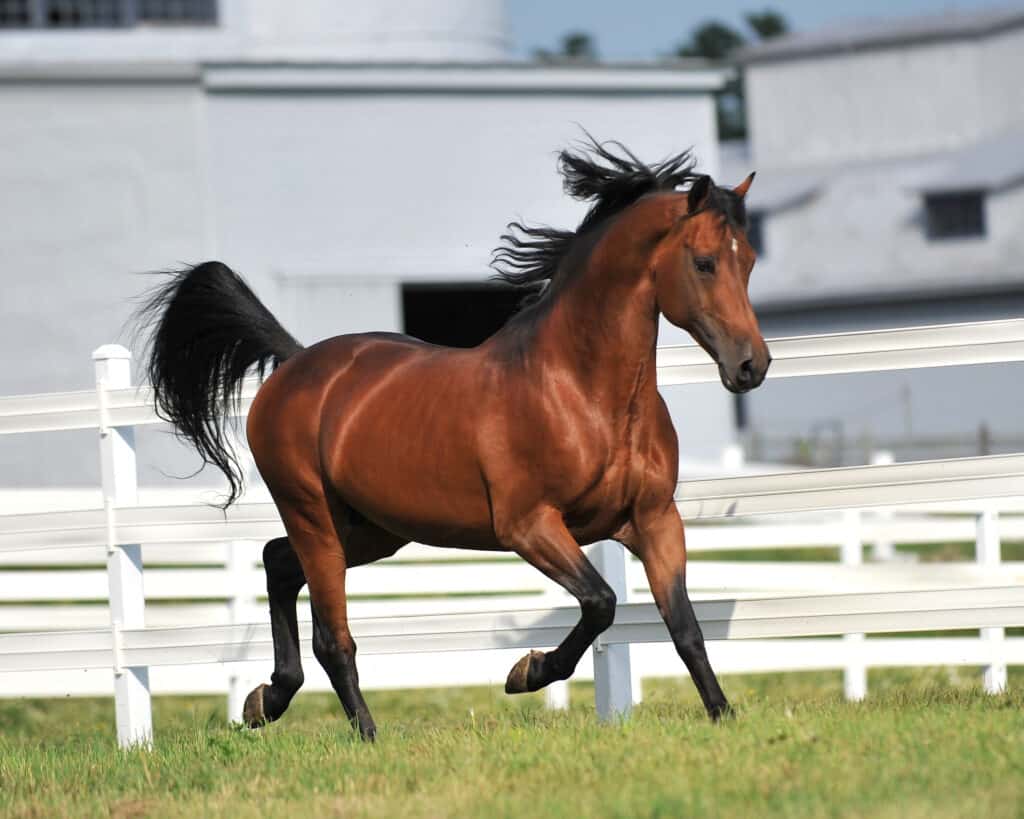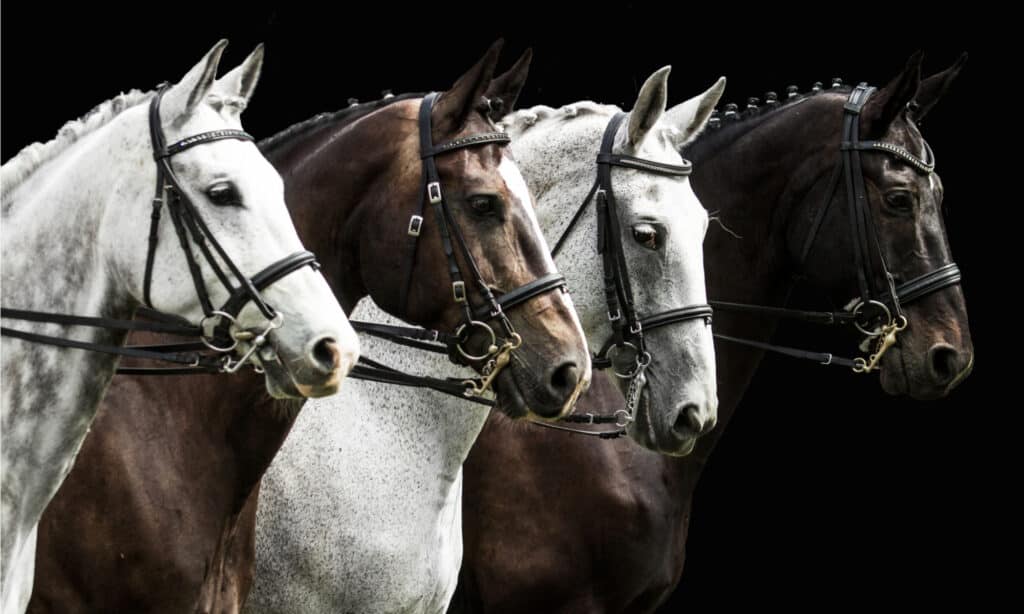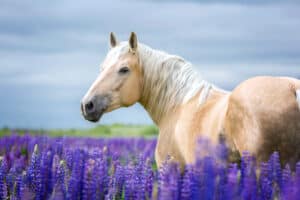Horses have been alive for around 4 to 4.5 million years, evolving from the Pliohippus species before them. The modern-day horse, known as the Equus, is native to North America, but went extinct on that continent about 11,000 years ago.
The species survived due to their migration to Asia and were later brought back to their homeland by Christopher Columbus during the Spanish Inquisition. There are around 19.5 million horses in North America alone, and nearly 59 million worldwide.
The average horse weighs in at 890 lbs and can be used for various uses. Some of the most common types include herding animals, towing equipment, racing, and just riding for pleasure.
The average lifespan of horses is 25 – 30 years, but here, you’ll discover the world’s oldest horses. As a hint, its more than double the average lifespan!
How many species of Horses are there?

There are more than 200 breeds of horses alive today and they typically have a lifespan of about 25 to 30 years.
©Christopher Crosby Morris/Shutterstock.com
Today, there are over 200 different breeds of horses! When they were first domesticated nearly 4,000 years ago, horses were bred for different purposes. It is easiest to categorize them as such: Ponies, Draft Horses, Gaited Types, Light Horses, and Warmbloods.
Ponies were bred for the same purpose as larger horses, including riding, pulling wagons, and other basic labor. Any horse that is less than 4.5 feet tall is considered a pony, which is why they now serve as a great way for children to learn to ride.
Draft horses are best known for their ability to carry and tow heavy loads. They were bred to be large in structure, and exceptional in strength. One of the most well-known breeds is the Clydesdale, easily recognized by their large hooves.
Gaited types were bred to have great stamina and be easy to ride. They would be used for long-distance traveling and still serve as excellent riding horses to this day. (This is the kind of horse Paul Revere rode!)
Light horses were most popular by cowboys in the American West. They are not as little as ponies, but are still small in stature. The cowboys favored Paint horses for herding work, but liked Quarter horses and Thoroughbreds for speed and racing.
Warmbloods are the best breed to compete with, as they are bred to be even-tempered and athletic. Breeders achieved this by crossing certain types, like draft and light horses.
The Oldest Horses

The oldest horse ever lived to be 62 years old.
©Rita_Kochmarjova/Shutterstock.com
The oldest horse on record goes by the name Old Billy, clocking in at an impressive 62 years. He hails from Lancashire, England, and was born sometime in 1760. Even after he surpassed the life expectancy of a normal horse, he kept working as a barge horse.
As he grew older and older, he became a sort of local celebrity. When he finally passed, his skull was put on display at Manchester Museum, and his skin was taxidermied and sent to Cecil Higgins Art Gallery & Bedford Museums.
In more recent times, Sugar Puff was a pony born in 1951 who reached 56 years of age. He was native to West Sussex, United Kingdom, and was well loved by his family. His owner, Sally Botting, said that she had taught her daughter to ride on Sugar Puff, and that he would even enjoy the Christmas festivities inside the house with the family.
Badger is another horse who lived into his fifties, 51 to be exact, and is listed by the Guinness Book of World Records as the World’s Oldest Horse. He was born in 1953 and spent his old age in a Livery Yard as a horse for hire, where his handlers did not properly take care of him. Activists rescued Badger about a year before he eventually died.
The final horse on this list goes by the name of Shayne, who also lived to be 51. Born in 1962, Shayne died in 2013 after a long, happy life in Essex, England. There was a movement to submit Shayne to be the next Guinness World Record Holder for the world’s oldest horse, but Shayne passed before he could compete for the title. His final owners said that Shayne lived so long because he was well cared for and not overworked.
Horse Behavior and Diet
Despite their large size and heavy weight, horses are actually herbivores. Their natural habitats are meadows, so they rely heavily on grazing grass. Since they are domesticated, they should consume a daily diet of hay and grass, but can eat other fruits and vegetables to supplement. Some of the most popular types are apples and carrots.
Whether in the wild or kept domestically, horses are social animals and should be kept in a herd. When with companions, they fall into a playful and helpful state. They are usually high-energy animals and exhibit mutual grooming behavior and nuzzling with other herd members.
Horses v. Donkeys and Zebras

Zebras also belong to the Equidae family.
©iStock.com/Cavan Images
While horses, donkeys, and zebras all belong to the Equidae family, they are different species. The biggest difference between these three is simply appearance. Zebras are generally smaller and slower than horses, and have a distinct black and white striped pattern to their coat. Zebras are also harder to tame than horses.
Donkeys have smaller hooves than horses, along with longer and thicker ears. Their tails are also shorter than horses, similar to a cow. Horses are generally larger than both zebras and donkeys and have long, oval-shaped hooves. They also have long legs, thick necks, and a muscular torso.
Are Horses Endangered?
This might be surprising, but yes. A specific kind of horse, Przewalski’s horse, found in Mongolia, is the last truly wild horse breed and is critically endangered. Today, you can only find them in limited populations in reintroduction sites in Mongolia, China, and Kazakhstan.
Though a long way away, there are hopes that these reintroduction sites will serve as safe havens that allow wild horses to repopulate and thrive once again.
The photo featured at the top of this post is © Tamara Didenko/Shutterstock.com
Thank you for reading! Have some feedback for us? Contact the AZ Animals editorial team.







